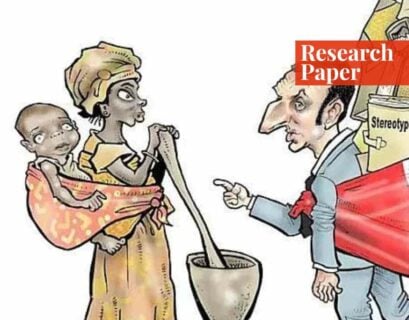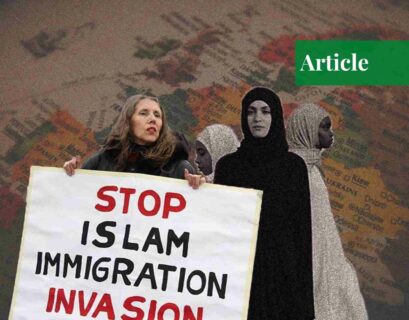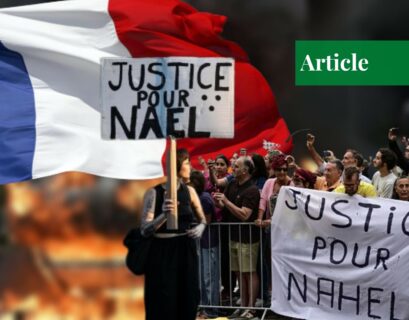Haniya Ali is pursuing her Bachelor's in Government and Public Policy from National Defence University, Islamabad.
Introduction
This piece is a continuation of our current two-part “Veiled & Unveiled” project; while the first one is more diverse in its scope, considering the politics of the veil in France, India, and Iran, this particular piece is against the backdrop of the burqa ban in Europe.
Going down history, the burqa was worn by the women of the Byzantine Empire and soon became part of Muslim culture when the Arabs conquered the land. It is a long, flowing garment that covers the entire body from head to toe and is an essential component of Muslim women’s attire in many nations. Women have covered their heads at various historic points, including Jews, Christians, and Hindus.
There are different burqas; while some leave the face exposed, most feature a fabric or metal grid that conceals the face while allowing the wearer to see. The wearing of the burqa has been outlawed or restricted in several European countries, including France, Belgium, Denmark, Austria, and Bulgaria.
According to proponents of the burqa ban, assuring national security and cultural integration of Europe is imperative. On the other hand, the burqa ban’s detractors contend that it unfairly restricts women’s right to practice their religion. These bans have caused anger and are still a contentious topic today.
What Does the Burqa Symbolize?
The symbolism of the burqa can vary from person to person; for some, it represents faith, unity, and modesty, while for others, it’s a source of oppression and terrorism. The former shows that women felt secure and comfortable in that attire, while the latter denotation points towards the oppressive rule of the Taliban in Afghanistan. These cultural and religious symbols dangle society, individuals, and the state. One may argue that the West’s decision to forbid burqas has more to do with Islamophobia than emancipation.
The Swiss Government’s Burqa Ban
According to the Swiss Broadcasting Corporation, the right-wing Egerkingen Committee, which also spearheaded the effort to outlaw minarets more than ten years ago, organized a people’s initiative to put the new law on the ballot. The group petitioned the government in 2017 with over 100,000 signatures, demanding that the matter proceeds to a public vote.
The Swiss government criticized the nationwide initiative as overly broad. It stated that such prohibitions should be handled by specific regions, two of which currently have a “burqa ban” in effect. The ban barely won, with 51.2% of Swiss voters in favor of the plan. The nationalist Swiss People’s Party, one of the initiative’s biggest proponents, praised the vote’s conclusion and dubbed the new law “a strong symbol in the struggle against extreme political Islam.”
President of the Swiss People’s Party Marco Chiesa said in a statement that the burqa “creates a barrier between the person wearing it and the environment and so limits assimilation into society.” According to reports, several progressive Muslim and feminist organizations supported the effort because they believed women should not have to wear complete facial coverings. However, other groups said that the new rule was Islamophobic and that women shouldn’t be instructed on what to wear.
The findings of the Islamic Central Council of Switzerland were “Islamophobically motivated” as, among 8.6 million, approximately 5% are Muslims. To add fuel to the fire, in October 2022, to enact a “burqa ban,” the Swiss government submitted a draft law to the parliament that would impose fines of up to $1,000 (around ₹83,000) on those who disobey a countrywide ban on facial coverings.
Denmark’s New Law Veiled as Public Safety
In 2018, human rights advocates denounced Denmark’s decision as “neither essential nor proportionate,” as it joined several other nations in Europe in the ban of face-covering clothing, including Islamic veils like the niqab and burqa. Danish MPs passed the measure proposed by the center-right government coalition in a vote of 75 to 30, with 74 absentees.
The government claimed that it did not target any particular faith and did not forbid turbans, headscarves, or the customary Jewish skull cap. Those violating the ban will be forced to pay 1,000 kroner as a fine. They contend that a ban will advance integration and public safety and that donning a veil goes against societal norms of gender equality.
France’s Enigma
France became the first nation in Western Europe to ban the burqa. The burqa, which completely encloses the face and body, is the most traditional type of Islamic veil. The wearer can see via a mesh screen in front of their eyes. According to The Daily Telegraph, a “clampdown on kids in state-run schools displaying any type of religious emblem” signaled the start of the restrictions in 2004.
The government officially outlawed full-face veils in April 2011 after President Nicolas Sarkozy declared them “unwelcome” in France. Over the years, the series of events proved that France was against Muslims. Recently, France’s highest court maintained a ban on barristers wearing the hijab and other religious symbols in courtrooms. The court supported the ban by calling it necessary, appropriate, and non-discriminatory.
Spain’s Partial Ban
In June 2010, the Senate narrowly and unexpectedly approved a motion to forbid Muslim women from donning the burqa or other full-body coverings in public, escalating the debate over how to deal with radical Islam in Spain. The then-socialist government of Prime Minister José Luis Rodrguez Zapatero had favored more limited restrictions on Islamic clothing and had instead been pushing to curtail religious fundamentalism through better education.
Before the Spanish Senate’s vote, some municipal governments in the nation had already taken steps to impose burqa bans. The situation was particularly tense in Catalonia, where early campaigning for regional elections had entwined the discussion about Islam and immigration. As a result, senators from the Catalan party CiU unexpectedly changed their position to vote in support of a burqa ban. Nowadays, Spain is following the partial ban policy in some parts of the country.
Norway‘s Education Institutes
The burqa and niqab were prohibited at nurseries, schools, and colleges in Norway, thanks to a resounding decision in the country’s parliament in 2018. The Storting adopted revisions to numerous statutes that “imply that there is a prohibition on the use of apparel that totally or partially covers the face” in a learning environment by a vote of 91 to 8.
However, the Socialist Left Party (SV) stated it would not support a statewide ban because research revealed only a “minor problem” with students wearing classroom coverings.
Conclusion
The burqa ban has drawn more and more attention in the past few years because of the fast-growing Islamophobia in Europe. In this regard, several European nations either outlaw it or vehemently dispute its compatibility with western norms. There are misconceptions, biases, and discriminations towards Muslims in several important Western civilizations.
Islamophobia is expressed to the extent that people hold particular ideas about Muslims in their communities, Muslims worldwide, and Islam as a religion. These attitudes are real, quantitative, and have observable effects. The claim that “the burqa oppresses all women” and that the state should thus outlaw it suggests that it is the state’s responsibility to control and restrict a woman’s choices over how she expresses her religious beliefs through her outer appearance.
This absurd intrusion undermines Muslim women’s ability and right to choose how to live their lives and how they exhibit themselves in public rather than protecting them, as is allegedly the objective. This emerging trend of banning religious or cultural symbols of Muslims will not die easily. What it requires is the unity of the Muslim world on international forums against these practices.
If you want to submit your articles and/or research papers, please check the Submissions page.
The views and opinions expressed in this article/paper are the author’s own and do not necessarily reflect the editorial position of Paradigm Shift.



















